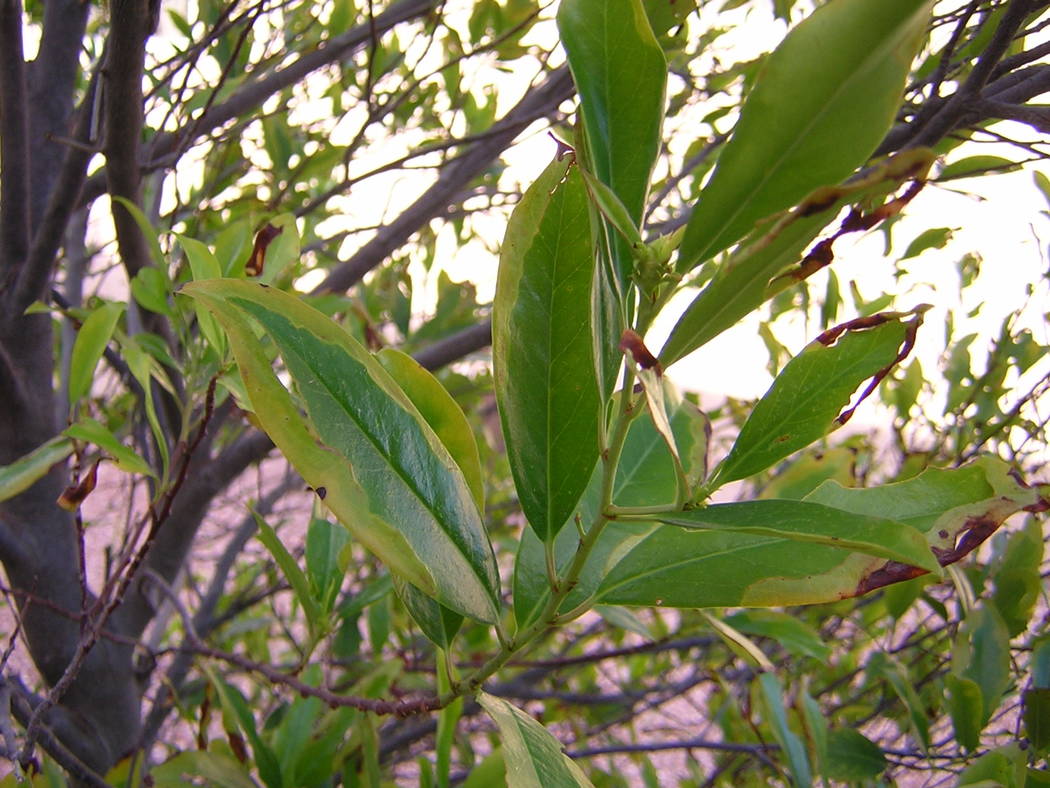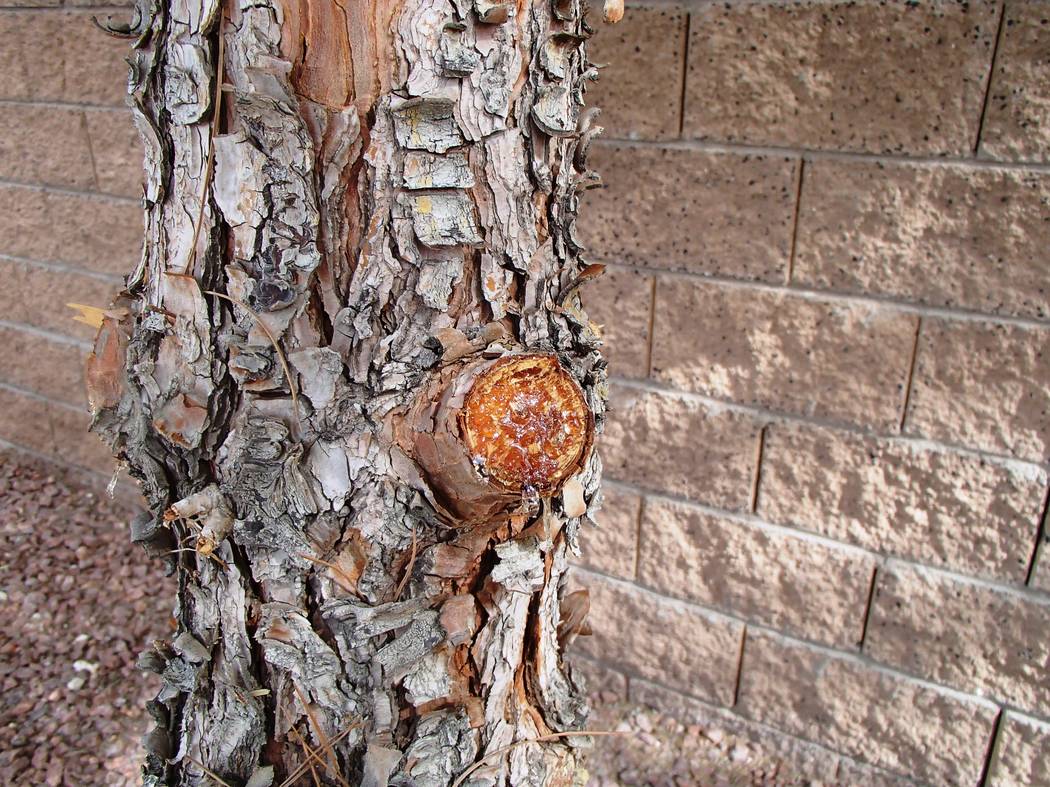Mulch helps cool plants on hot summer days
Q: Can you give some tips on how to survive this latest bout of heat? Is it simply too hot right now for plants? Is shade cloth the answer?
A: It has been hot these past few weeks and very stressful for many landscape plants. Just like us, healthy plants have the best tolerance to the extremes of heat and cold. But water and fertilizer can be a killer if too much is applied.
Shade cloth is helpful in some situations, but it is usually for vegetables. Use shade cloth to manage the intensity of sunlight to reduce sunburn or for tender vegetables. Shade cloth somewhere between 30 to 50 percent is used with these plants. Otherwise, rely on the leaves of these plants to provide their own filtered light.
Avoid watering trees, shrubs or any plants that are woody every day. Try to give these plants at least one day of rest, without irrigation, between waterings. Some landscape plants have roots that suffocate easily if the soil contains too much water. These plants seem to die overnight when watered daily or the soil remains wet.
Mulch of any kind, whether it is rock or wood chips, applied to the surface of the soil helps cool it, preserves soil moisture and helps battle weeds. Rock mulch applied to the surface of the soil is best for desert species. Wood chip mulch is best for nondesert species. A surface layer of mulch can add one or two extra days between irrigations.
Make sure plants enter the heat of the day with their roots surrounded by moist soil. There is a difference between wet and moist.
This is particularly true of plants grown in containers. These soils dry out faster than soils in the landscape. Plus containers warm their soils faster compared to landscape soils. Wet or moist soils warm up slower than drier soils.
Apply lawn irrigations as close to dawn as possible but when still dark. Wind speed is usually slowest at these times.
Never put a lawn “to bed” wet. Give the leaves a chance to dry off before it gets dark. This helps avoid lawn diseases.
You can apply fertilizers this time of year, but use half the recommended rate, and apply it when temperatures are cool, during the mornings or evenings. Make sure dry fertilizers are rinsed into the soil immediately after they are applied. Liquid fertilizers can be sprayed on leaves but only during the morning when temperatures are cool.
Light pruning can be done anytime during the growing season. Never use anything bigger than a hand pruner this time of year. Saws and loppers should be used only during late fall, winter and early spring.
Don’t remove too much. Always leave some growth to shade the trunk, stems and branches.
Q: When laying hybrid Bermuda grass sod, does it make sense to water two or three times on hot days?
A: Freshly laid Bermuda grass sod should be watered once a day. Bermuda grass is a very fast grower and loves the heat. Avoid sprinkling the sod just enough to keep it wet. It needs more water than that.
Bermuda grass sod needs water and nitrogen fertilizer so that its roots can knit into the soil beneath it. When watering, make sure enough is applied to wet the soil several inches beneath it.
As you begin mowing, increase the amount of water applied and try to water every other day during the heat. This forces its roots to grow deeper, and the grass will become more drought tolerant.
Hopefully, a phosphorus fertilizer was applied to the soil before laying the sod. If not, then apply one now. Use a single application of 16-20-0 at a rate of 2 to 3 pounds of fertilizer per 1,000 square feet and water it in immediately after application.
Apply nitrogen fertilizers once a month during establishment. Apply 21-0-0 at 3 pounds per 1,000 square feet. Once the lawn is established in about three months, reduce fertilizer applications to three or four times per growing season.
Q: Our acacia and other trees in our neighborhood have leaves that are turning yellow. Is this from all the heat we’ve had or too much watering?
A: This extended heat wave requires you to water more often. But avoid watering daily, particularly trees and shrubs. Instead, it’s best if you increase the number of minutes so that you can avoid watering every day.
Leaf yellowing is not because of heat but because of either dry soils or soils that are continually wet. Continually wet soils can occur from daily watering. Watering desert-adapted plants every day may cause their roots to suffocate from too much water.
Watering less often, but with larger amounts of water, forces roots to grow deeper and harvest water from greater soil depths.
Plants are lazy. They require more energy to harvest water from deep in the soil than from the surface. If water is applied to the surface every day, these lazy plant roots slurp up the surface water and hardly touch the deeper water, if there is any.
If water can be found deep in the soil and the surface of the soil begins to dry, tree roots will be forced to grow and harvest water from these deeper, wet soils. This deeper growth improves anchoring of the tree and reduces blowover during high winds.
If you are going to make a mistake in overwatering, make the mistake of watering too much, e.g., increasing the number of minutes, rather than watering daily.
Q: One of the pine trees in my backyard has developed a split in the bark and is oozing some sap. The trees were planted about 10 to 12 years ago and are now 12 to 14 inches in diameter. Is this something we should be concerned about?
A: If the trees appear otherwise healthy, most likely not. When pine trees have wounds, it is normal for them to leak sap. It is their way of healing from wounds.
Make sure the tree is getting enough water. Having adequate water speeds the recovery from wounds. The tree’s canopy is a quick way to know if your pine tree is receiving enough water. Dense canopies with lots of new growth is a good indicator enough water is being applied.
Water these trees deeply but infrequently. In other words, give them big drinks of water and then hold off as long as you can before the next irrigation. Deep irrigations two or three times a week should be enough.
Bob Morris is a horticulture expert and professor emeritus at the University of Nevada, Las Vegas. Visit his blog at xtremehorticulture.blogspot.com. Send questions to Extremehort@aol.com.
























